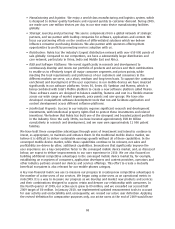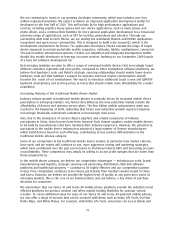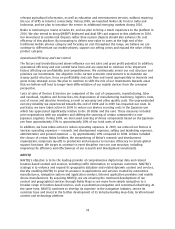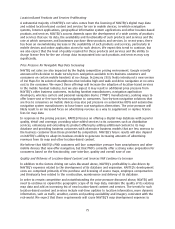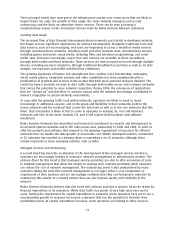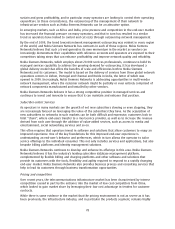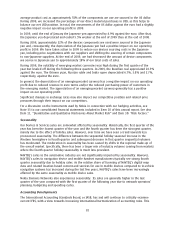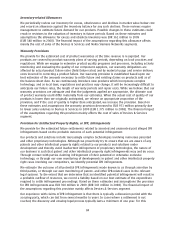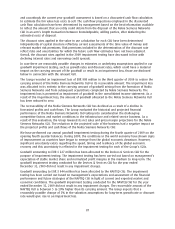Nokia 2009 Annual Report Download - page 80
Download and view the complete annual report
Please find page 80 of the 2009 Nokia annual report below. You can navigate through the pages in the report by either clicking on the pages listed below, or by using the keyword search tool below to find specific information within the annual report.sustain and grow profitability, and in particular many operators are looking to control their operating
expenditure. In those circumstances, the outsourcing of the management of their network to
infrastructure vendors such as Nokia Siemens Networks can be an attractive option.
In emerging markets, such as Africa and India, price pressure and competition in the enduser market
has increased the financial pressure on many operators, and that in turn has resulted in a similar
trend as operators have looked to control and cut costs through outsourcing network management.
By the end of 2009, the trend towards network management outsourcing was evident in every region
of the world, and Nokia Siemens Networks has contracts in each of those regions. Nokia Siemens
Networks believes that such a trend generates its own momentum in the market as vendors can
increasingly demonstrate their capabilities with reference accounts and operators are exposed to their
competitors taking steps that can enhance profitability and improve network quality and reliability.
Nokia Siemens Networks, which employs about 28 000 services professionals, continues to build its
managed services capability to address the growing demand for outsourcing. It has developed a
global delivery model that offers the benefits of scale and efficiencies both to Nokia Siemens
Networks and its customers. The model is based on the delivery of services from three global network
operations centers in Lisbon, Portugal and Chennai and Noida in India, the latter of which was
opened in 2009. Increasingly, Nokia Siemens Networks is addressing opportunities in multivendor
network management, where the customer network might be partially or even entirely comprised of
network components manufactured and installed by other vendors.
Nokia Siemens Networks believes it has a strong competitive position in managed services and
continues to invest and innovate to ensure that it can maintain and enhance that position.
Subscribercentric Services
As operators in many markets see the growth of net new subscribers slowing or even stopping, they
are increasingly focused on leveraging the value of the subscribers they have. As the acquisition of
new subscribers to networks in such markets can be both difficult and expensive, customers look to
limit “churn”, where endusers transfer to a rival service provider, as well as to increase the revenue
derived from each user through the addition of valueadded services, such as access to media and
entertainment, social networking services and so on.
This often requires that operators invest in software and solutions that allow customers to enjoy an
improved experience. One of the key foundations for this improved enduser experience is
understanding an enduser’s behavior and preferences, which in turn allows the operator to tailor
service offerings to the individual consumer. This not only includes services and applications, but also
bespoke billing platforms and identity management solutions.
Nokia Siemens Networks continues to develop and enhance its offerings in this area. Nokia Siemens
Networks believes it has the industry’s leading subscriber database management platform,
complemented by flexible billing and charging platforms and other software and solutions that
provide its customers with the tools, flexibility and agility required to respond to a rapidly changing
enduser market. Nokia Siemens Networks also provides business process and consulting services that
help to lead its customers through business transformation opportunities.
Pricing and competition
Over recent years, the telecommunications infrastructure market has been characterized by intense
competition caused in part by the entrance into the market of low cost competitors from China,
which looked to gain market share by leveraging their low cost advantage in tenders for customer
contracts.
While there is some evidence in the market that the pricing environment is not as severe as it has
been previously, the infrastructure industry, and in particular the products segment, remains highly
78


